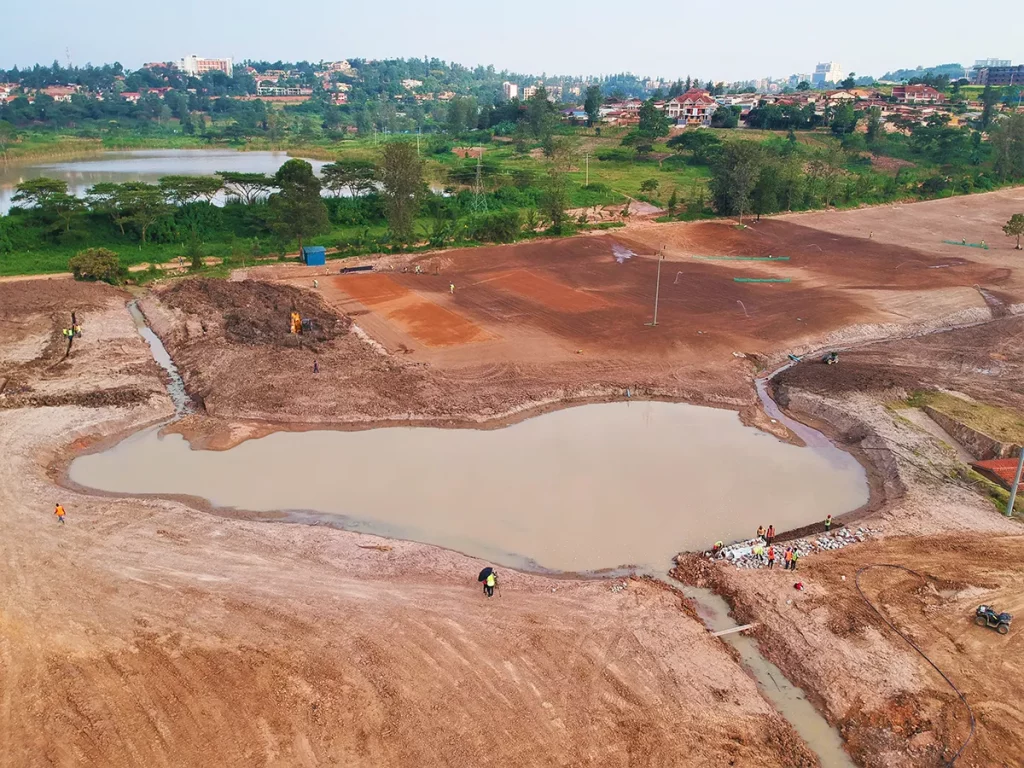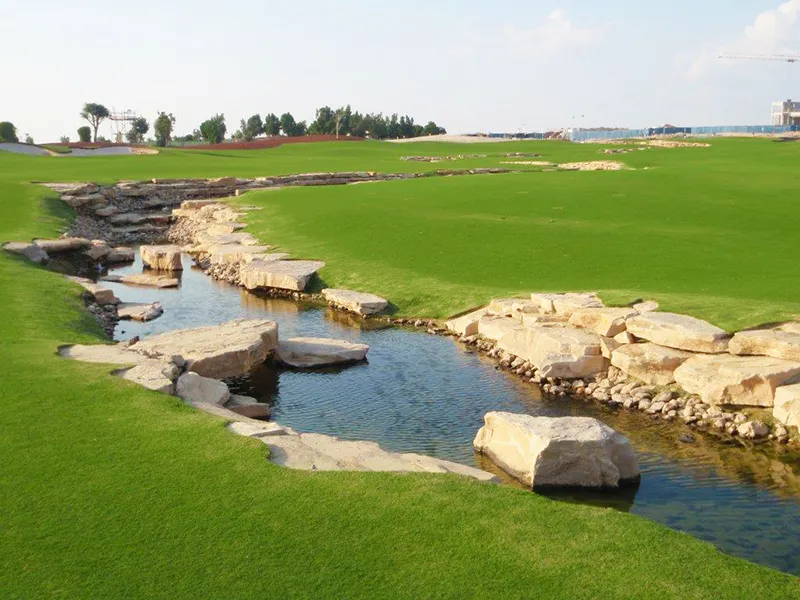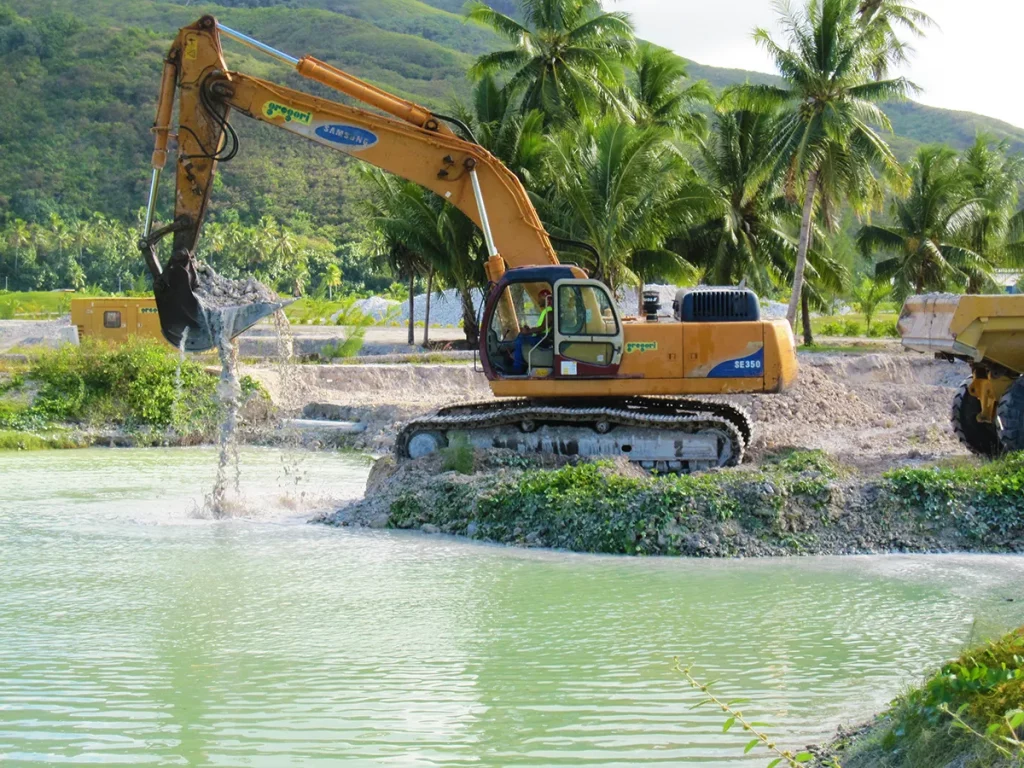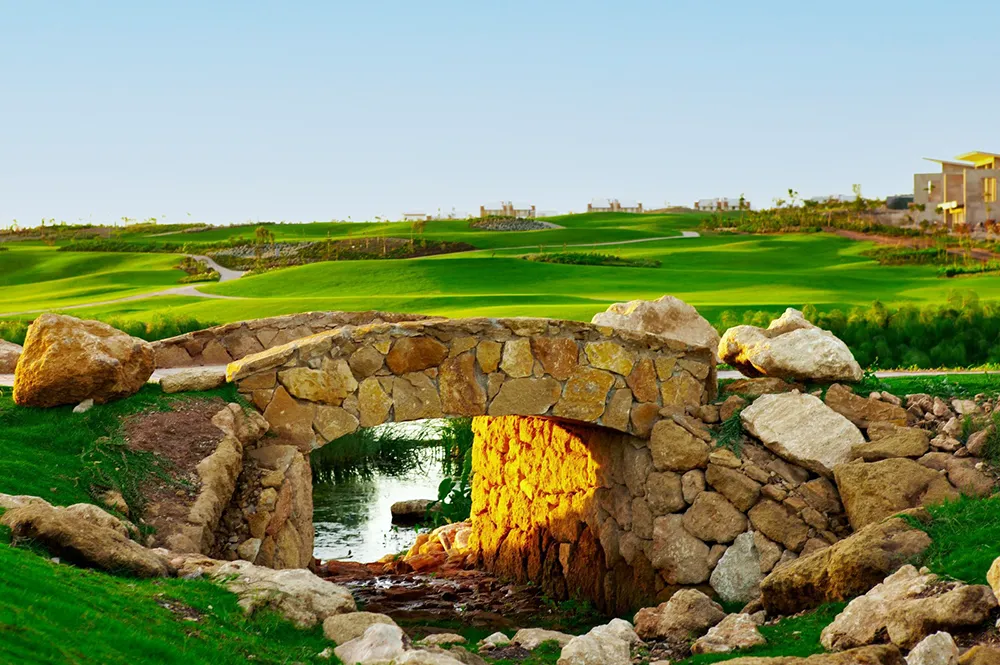Home | Natural areas and hydraulic engineering
natural areas
and hydraulic engineering
FLOW MANAGEMENT AND PRESERVATION OF NATURAL AREAS
In the context of climate change, the preservation of natural areas, particularly wetlands, in the face of urbanization, is a topical issue. The construction of new structures requires us to study the management of water, whether excess or lacking, in order to control and preserve these environments.
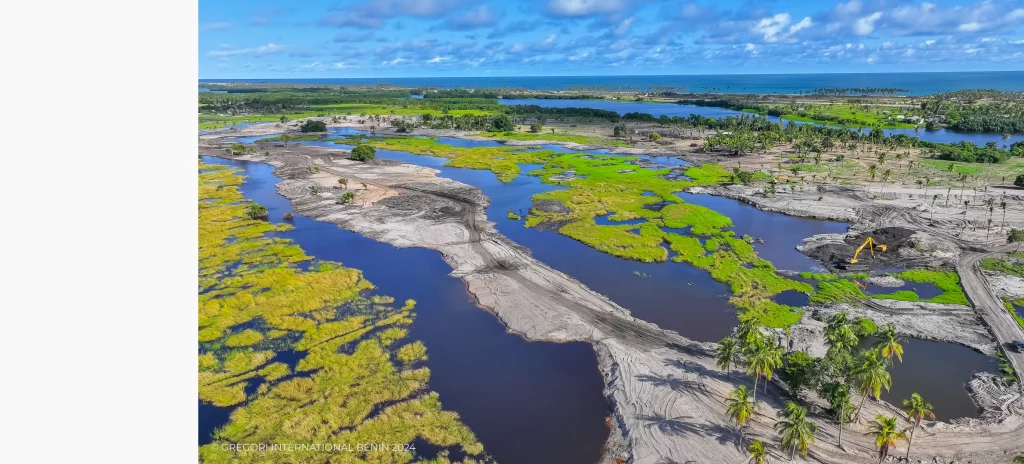
Our services for natural areas
& hydraulic engineering
Technology at the service of a stable natural environment
Over the course of its many years of experience, the company has specialized in the design and implementation of structures and techniques to preserve, control, restore or recreate natural areas.
- Soils: erosion control, stabilization using riprap, earth anchors, hydroseeding...
- Water: construction of technical drainage and retention structures, and water storage basins to evacuate or store water for irrigation, depending on water requirements.
The increasing frequency of floods and droughts, as well as the sometimes violent nature of these phenomena, call for appropriate engineering structures. It is crucial to manage water efficiently for domestic and recreational needs, while preserving natural resources.
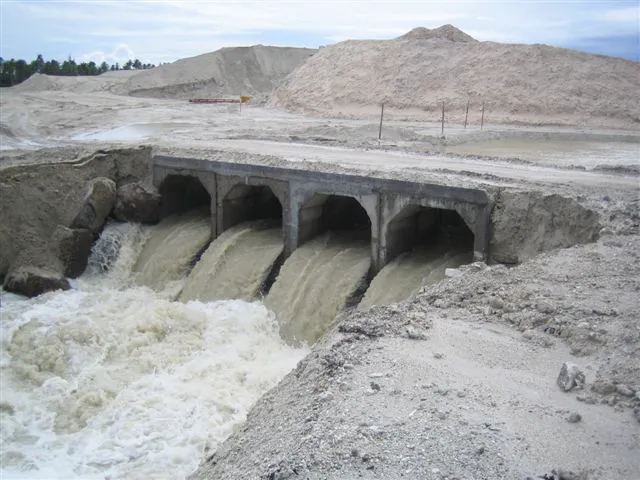
Discover hydraulic
engineering projects
By combining its technical skills with a responsible vision of the environment, the company offers solutions adapted to today’s challenges related to water, biodiversity and the preservation of natural areas. Thanks to this approach, Gregori International contributes to the creation of sustainable, environmentally-friendly infrastructures for the benefit of future generations.
What is hydraulic work in a natural environment ?
Hydraulic work aims to manage, restore or secure water-related environments :
Rivers, wetlands, banks, lakes, lagoons
Improved flow and flood prevention.
Shoreline stabilization by plant engineering or light structures
Erosion protection and ecological restoration of aquatic habitats
Its main objective is to reconcile hydraulic operation and environmental balance.
What are the objectives of hydraulic works?
- Restore the proper functioning of waterways
- Limit the risk of flooding and erosion
- Preserve wetlands and associated biodiversity
- Improving water quality and groundwater recharge
- Rehabilitate old structures (dikes, weirs, canals)
These actions ensure a sustainable coexistence between man and aquatic environments.
What techniques are used for bank stabilization ?
These techniques combine hydraulic efficiency and landscape integration, limiting the impact on ecosystems. We find:
Plant engineering : willow plantations, cuttings, fascines.
The installation of biodegradable geotextiles to fix the embankments
The installation of Gabions or riprap in areas with high hydraulic stress.
The gentle reprofiling of the banks to restore their natural slope
How can we reconcile hydraulics and ecology?
Here, the challenge is to integrate high-performance technical solutions that respect natural cycles. By favouring sober, infiltrating devices that are compatible with biodiversity, it is possible to ensure hydraulic safety and ecological balance. This approach creates sustainable, resilient developments that are better integrated into the territory.
What are the major environmental issues ?
Among the challenges recognized are: the preservation of aquatic environments and their biodiversity, the reduction of pollution and improvement of water quality, the prevention of floods in an unstable climate context, the reconnection of wetlands to restore the water cycle and adaptation to climate change, via natural and resilient solutions.
What types of projects require hydraulic works ?
Landscaping, sports infrastructure, retention basins, coastal projects or environmental rehabilitation: all can integrate hydraulic solutions. Most of the time, projects meet the following needs:
- Restoration of rivers and wetlands
- Coastal development and the fight against coastal erosion
- Rehabilitation of canals or watersheds.
- Creation of water reservoirs for irrigation or fire reserves
Flood protection in urban or rural areas
What know-how is essential for this type of work ?
- Hydrology and topography to understand flows
- Civil and ecological engineering to design sustainable structures
- Soil management and revegetation to stabilize the embankments
- Environmental monitoring and water quality control
- Technical coordination and site safety
These skills guarantee respectful and efficient interventions in natural areas
